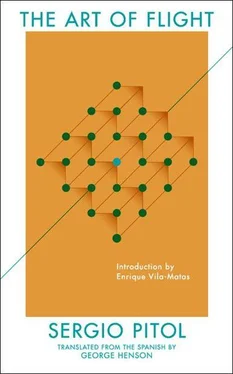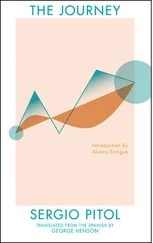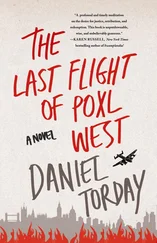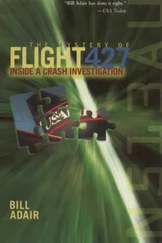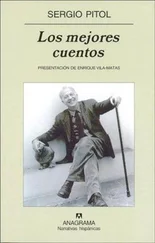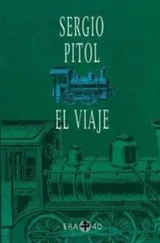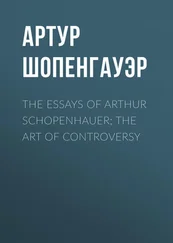Sergio Pitol - The Art of Flight
Здесь есть возможность читать онлайн «Sergio Pitol - The Art of Flight» весь текст электронной книги совершенно бесплатно (целиком полную версию без сокращений). В некоторых случаях можно слушать аудио, скачать через торрент в формате fb2 и присутствует краткое содержание. Год выпуска: 2015, Издательство: Deep Vellum, Жанр: Современная проза, на английском языке. Описание произведения, (предисловие) а так же отзывы посетителей доступны на портале библиотеки ЛибКат.
- Название:The Art of Flight
- Автор:
- Издательство:Deep Vellum
- Жанр:
- Год:2015
- ISBN:нет данных
- Рейтинг книги:5 / 5. Голосов: 1
-
Избранное:Добавить в избранное
- Отзывы:
-
Ваша оценка:
- 100
- 1
- 2
- 3
- 4
- 5
The Art of Flight: краткое содержание, описание и аннотация
Предлагаем к чтению аннотацию, описание, краткое содержание или предисловие (зависит от того, что написал сам автор книги «The Art of Flight»). Если вы не нашли необходимую информацию о книге — напишите в комментариях, мы постараемся отыскать её.
The first work in Pitol's "Trilogy of Memory," The Art of Flight imaginatively blends the genres of fiction and memoir in a Borgesian swirl of contemplation and mystery, expanding our understanding and appreciation of what literature can be and what it can do.
The Art of Flight — читать онлайн бесплатно полную книгу (весь текст) целиком
Ниже представлен текст книги, разбитый по страницам. Система сохранения места последней прочитанной страницы, позволяет с удобством читать онлайн бесплатно книгу «The Art of Flight», без необходимости каждый раз заново искать на чём Вы остановились. Поставьте закладку, и сможете в любой момент перейти на страницу, на которой закончили чтение.
Интервал:
Закладка:
Reading Jules Verne had fueled in me a certain desperation to travel and become lost in the world; perhaps compensation for my childhood seclusion. In early 1953 I traveled abroad for the first time. It was a trip to South America. I planned to disembark in Venezuela, travel through Colombia and Ecuador to reach Peru, where I would embark again for Mexico. Letters of introduction from Alfonso Reyes provided immediate access to various Venezuelan intellectuals and foreigners residing in Venezuela. While there, I met the essayist Maríano Picón Salas, the most respected Venezuelan on the continent, Alejo Carpentier, Juan David García Bacca, and many others. In my early days in Caracas, Carpentier’s novel The Kingdom of This World , which had been published in Mexico, appeared in bookstores, whose reading, of course, left me dazzled. Carpentier became one of three Hispano-American authors who, during my university years, constituted my personal Olympus; the others were Borges and Onetti, to whom I have added half a dozen other names. What attracted me most to the Cuban writer was his rhythm, the austere melody of his phrasing, an intense verbal musicality with classical resonances and modulations that came from other languages and other literatures. To the quality of his language Carpentier added the allures of the Caribbean, its intricate geography, its fascinating history, the crossroads of myths and languages, political reflection; all of which was integrated into perfect plots. Explosion in a Cathedral is one of the most extraordinary novels in the Spanish language, a tale about the influence of the Enlightenment on the islands and the continent, and a bitter and profound reflection on political ideals — revolution, its triumph, its transformation into raison d’État —ideals held in public proclamations but denied and fought in practice. I never encountered the same tension in anything Carpentier wrote later.
Venezuela was suffering at the time under the cruel and obtuse military dictatorship of Pérez Jiménez. I remained in Caracas for several months instead of undertaking the ambitious itinerary I had previously outlined. I celebrated my twentieth birthday there. I wrote an occasional article for El Papel Literario , the cultural supplement edited by Picón Salas, as well as a few poems I hoped to publish as soon as I returned to Mexico. Love poems, of course. My guardian angel protected and saved my literary future: I misplaced the poems. When I reread them thirty years later, I was petrified; to say they were atrocious would be to praise them. Had I published them, it is very likely that my relationship to literature would have been dealt a mortal blow. In any case, I lived for the first time the incomparable experience involved in creation. During those months, I witnessed a political and social unrest that was all but nonexistent in the circle in which I moved in Mexico.
When I returned home, I enrolled in a course in dramatic theory and technique with the intention of learning to write theater. I was certain that my vocation was pointing me in that direction. The playwright Luisa Josefina Hernández assigned us some Greek tragedies and gave us the task of adapting their themes to our century, to create Mexican Electras, Orestes, Iphigenias, and Oedipuses. I sketched my dramatic outlines in accordance with her instructions, and when I began to develop them I was surprised that, instead of a tragedy, a short story was taking shape. They were twilight recreations of life on ranches and haciendas of my native Veracruz, in which I summarized the family mythology that I had assimilated for as long as I could remember. An inexplicable alchemic impulse, which I felt incapable of resisting, caused the dialogues and stage directions to disappear and, in their place, a narrative web began to take shape, which included the history of those foreign families, whose arrogance I surely exaggerated, scattered around Huatusco and its surroundings, where my great-grandparents had settled a century before.
At twenty-five I published my first book of stories: Tiempo cercado (Corralled Time) and thus began to expel the toxins I had accumulated since childhood. Living in Veracruz meant being periodically engulfed in the fiesta. At the time, however, I was unable to discern what I would later learn in Bakhtin, namely that the feast makes up the primary and indestructible ingredient of human civilization; it may weaken, it may degenerate even, but there will never be a force that can eclipse it completely. “The feast,” says the Russian philosopher, “has no utilitarian connotation (as has daily rest and relaxation after working hours). On the contrary, the feast means liberation from all that is utilitarian, practical. It is a temporary transfer to the utopian world.” 4Although I was immersed in the feast, I did not allow it access to those tales of Veracruz that suffered conspicuously from its absence; in those stories, evil appears as a factotum; it constitutes a closed universe, univocal, reluctant to recognize, much less celebrate, “the world’s inexhaustible mutation.” Those family histories that depict the deterioration of immense houses that are possessed over time by humidity, weeds, and the devil held for me a single virtue: they allowed me to cut an umbilical cord that refused to be severed. When I wrote my first books, Tiempo cercado and Infierno de todos (Everyone’s Hell), which brought together those tales whose somber tone and rigid literary devices did not reconcile with the exuberant nature from which they emerged, I learned how to tell stories, to recreate some of the characters that my grandmother resurrected as she spoke about her lost Huatusco. But, above all, I rid myself of a world that belonged only vicariously to me, and I felt obligated to recount exploits and disasters closer to my experience. My guardian angel during that time was William Faulkner, whose Yoknapatawpha County I attempted to recreate among the coffee plantations, palm trees, and dark tropical rivers.
During the time I wrote those stories, I traveled to New York. It must have been 1956. Only in recent years have I realized the vast education those two very different trips provided me. I have since gone to many museums, but none of those visits succeeded in repeating the wonder produced by those in New York, above all the Museum of Modern Art. For weeks I was appalled by the scale of my ignorance but took delight in the extraordinary surprises that my efforts to diminish that ignorance afforded me. What a difference between Guernica in its natural state and its miniature reproductions in magazines or cultural supplements! I discovered many of the trends in contemporary art, and I was won over or unsettled (which, in the end, is the same thing) by some of them. During that period the Expressionists did not yet enjoy the prestige they enjoy today. It was difficult to find them outside of a few German museums. On a wall of the Museum of Modern Art hung The Departure , the first of the new triptychs painted by Max Beckmann. Unlike traditional polyptychs that narrate a story — the tragic life of a martyr, the road to conversion of an excessively degenerate pagan that ends up becoming Pope, the exploits of a warrior who subjects vast territories to catechization, the vicissitudes of an emperor desperate to hold his empire together despite the push of an enemy infidel — where each panel represents a segment of the story so that the whole can provide us with the complete vision, Beckmann’s triptychs are flooded with strange figures engaged in unfathomable acts. A rich tapestry emerges before our eyes where certain signs are repeated over and over like pillars of a personal mythology. No sum is possible, and, therefore, the progressive sequence of a story is never achieved. In the triptych I am referring to, the side panels are a catalogue of sordid and brutal acts. In the left panel, a sinister-looking villain is torturing three people — two men and a woman. One has been mutilated: his hands cut off, the stumps still bloody. In the right panel, a young woman holding an oil lamp is walking with the corpse of a half-nude man trussed vertically to her body: the corpse is positioned head-down, the feet reach the woman’s neck, and the head the floor; behind her a bellboy is walking blindfolded, carrying a big fish in his hands. Beside him, a modestly dressed character is playing a drum energetically. The radiant central canvas stands in contrast to the sordidness going on in the side panels: a man wearing a crown and a woman holding a baby in her arms are standing beside a mysterious male figure with his face covered. The blue sky and sea shine as if it were varnish, in contrast to the absence of sunlight and the violence cloistered on the sides. I imagine the triptych’s title, The Departure , refers to that scene. The couple and their son, the king and queen of creation, are abandoning the cruel, turbid, and incomprehensible world that surrounds them. The brightness of the colors in the center, accentuated by the space in which the royal protagonists are situated, immediately attracts the observer’s eye.
Читать дальшеИнтервал:
Закладка:
Похожие книги на «The Art of Flight»
Представляем Вашему вниманию похожие книги на «The Art of Flight» списком для выбора. Мы отобрали схожую по названию и смыслу литературу в надежде предоставить читателям больше вариантов отыскать новые, интересные, ещё непрочитанные произведения.
Обсуждение, отзывы о книге «The Art of Flight» и просто собственные мнения читателей. Оставьте ваши комментарии, напишите, что Вы думаете о произведении, его смысле или главных героях. Укажите что конкретно понравилось, а что нет, и почему Вы так считаете.
